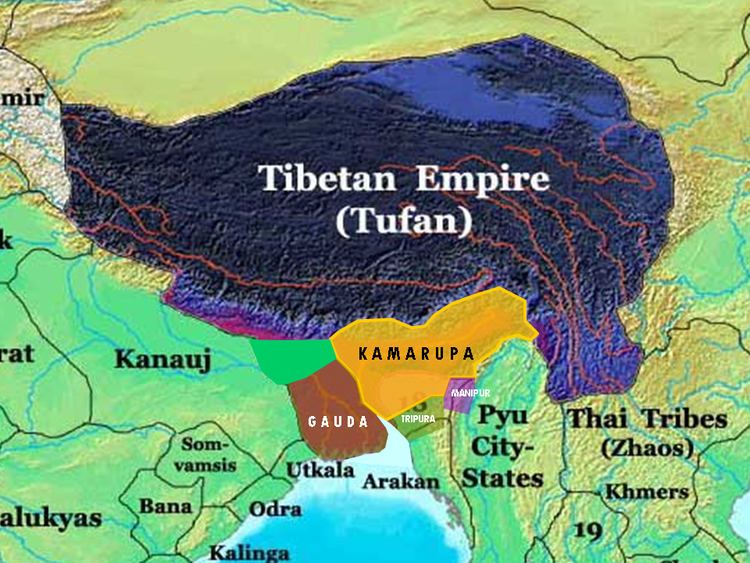Dhanya Manikya 1463-1515 Vijay Manikya II 1743-1760 Rajdhar Manikya 1783-1804 | Dharma Manikya II 1714-1733 Krishna Manikya 1760-1761 Ramgana Manikya 1804-1809 | |
 | ||
Gobolo strat attacks scifen vs twipra kingdom war highlights clash of clans
Twipra Kingdom (Sanskrit: Tripura, Anglicized: Tippera) was one of the largest historical kingdoms of the Tipra people in the North-east India.
Contents
- Gobolo strat attacks scifen vs twipra kingdom war highlights clash of clans
- 1001 crew vs twipra kingdom th9 fresh hit triples
- Geography
- Early history
- Islamic invasions
- British India
- References
The Tipra Kingdom was established around the confluence of the Brahmaputra river (Twima) with the Meghna and Surma rivers in today's Central Bangladesh area. The capital was called Khorongma (Kholongma) and was along the Meghna river in the Sylhet Division of present-day Bangladesh.
1001 crew vs twipra kingdom th9 fresh hit triples
Geography
The present political areas which were part of the Tipra Kingdom are:
The Tipra Kingdom in all its various ages comprised the areas with the borders:
- Khasi Hills in the North
- Manipur Hills in the North-East
- Arakan Hills of Burma in the East
- The Bay of Bengal to the South
- The Brahmaputra river to the West
Early history
A list of legendary Tripuri kings is given in the Rajmala chronicle,a 15th-century chronicle in Bengali verse written by the court pandits of Dharma Manikya (r. 1431). The chronicle traces the king's ancestry to the mythological Lunar Dynasty. In the 8th century, the Kingdom shifted its capital eastwards along the Surma river in Sylhet near present Kailasahar town of North Tripura.
The religion of the Tipra had 14 deities known as choddha devta (in Bengali) and is still preserved in the Choddha Devta Mandir in Old Agartala, which is maintained by the Tipra priests known as Chontai's, who oversee the festivals of the Kharchi and Ker according to traditions. It was similar to the Chinese folk religions.
Islamic invasions
The earliest historical records concerning the Twipra kingdom concern the 13th century, when it first came under pressure from the Islamic conquests in India. This is also the time of origin of the Manikya Dynasty, started when Ratna Fa adopted the title Manikya, which was held by all Kings of Tripura until the death of Bir Bikram Kishore Manikya in 1947. Ratna Fa shifted the capital to Rangamati on the banks of the river Gumti, now in South Tripura.
Twipra was first overrun by the Muslims under Tughril in 1279, but it managed to maintain its independence during the 14th through 19th centuries, until the British arrived. Tripura was one of the states that pushed back successive waves of Jihadi invasions from Turks, Ethipian Muslims, Afghans, and Mughals. On many occasions, Tripurans also pushed back Burmese and Arakanese invasions from the East. The Hill territories of Tripura, comprising present day Tripura state, Sylhet hills of Assam state, Cachar hills of Assam state, Mizoram state, and Chittagong Hill Tracts, remained free and independent before the British takeover. The plains of Tripura, however, fell to the Jihadi attacks from Mughals. The plains territories comprise today's South East Dhaka and Comilla areas. While the plains areas were thus Islamized, the Hills of Tripura served as a continuous bulwark against Jihadi penetration to the East. The Tripura Hill Kings were major sponsors of Hindu traditions and customs. In the modern age they are remembered as one of the longest and most stable dynasties from the Indian East.
Dhanya Manikya (r. 1463 to 1515) expanded Twipra's territorial domain well into Eastern Bengal. Rangamati was renamed Udaipur after Udai Manikya. The kingdom flourished in the 16th and 17th centuries, Kings such as Govinda Manikya putting up a defense against the pressure of the Muslim kingdoms to the west, until the final conquest of the plains areas by a renegade Tripuri prince backed by Mughal governors of Eastern Bengal plains. After this, plains Twipra was a Mughal client kingdom, with the Mughal rulers taking influence on the appointment of its kings.However the Mughals could never penetrate the Hill territories to the East.The plains,on the other hand were Islamized through forced conversion of the Bengali people living there.
British India
In British India, the kings retained an estate in British India, known as Tippera district or Chakla Roshnabad (now the greater Comilla region of Bangladesh), in addition to the independent area known as Hill Tippera, the present-day state of Tripura. Bir Chandra Manikya (1862–1896) modelled his administration on the pattern of British India, and enacted reforms including the formation of Agartala Municipal Corporation. The last king was Kirit Bikram Kishore, son of Bir Bikram Kishore Debbarma, who ruled for two years, 1947-1949. In 1949, Tripura became part of the Republic of India. The Tripuri "heir apparent" is Kirit Pradyot Deb Barma (born 1978), the son of the last king, who is sometimes given the courtesy title of "Maharaja".
